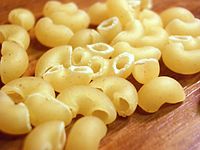
Penetration and Microbial Inactivation by High Voltage Atmospheric Cold Plasma in Semi-Solid Material
Sign Up to like & getrecommendations! Published in 2020 at "Food and Bioprocess Technology"
DOI: 10.1007/s11947-020-02506-w
Abstract: Multiple studies have demonstrated atmospheric cold plasma as an effective non-thermal technology for inactivating bacteria, spores, and other microbial contaminants in foods and on non-food surfaces. However, few studies have applied this technique to semi-solid… read more here.
Keywords: plasma; semi solid; cold plasma; inactivation ... See more keywords

Enhanced bioethanol production using atmospheric cold plasma-assisted detoxification of sugarcane bagasse hydrolysate.
Sign Up to like & getrecommendations! Published in 2020 at "Bioresource technology"
DOI: 10.1016/j.biortech.2020.123704
Abstract: The current study used acid hydrolysis of lignocellulosic materials to obtain fermentable sugar for bioethanol production. However, toxic compounds that inhibit fermentation are also produced during the process, which reduces the bioethanol productivity. In this… read more here.
Keywords: toxic compounds; production; cold plasma; hydrolysate ... See more keywords

Effect of high voltage atmospheric cold plasma on extraction of fenugreek galactomannan and its physicochemical properties.
Sign Up to like & getrecommendations! Published in 2020 at "Food research international"
DOI: 10.1016/j.foodres.2020.109776
Abstract: Fenugreek is a good source of galactomannan, however, conventional methods for its extraction are generally time-consuming and have relatively low recovery rates. In this study, we applied high voltage atmospheric cold plasma (HVACP) as a… read more here.
Keywords: high voltage; extraction; fenugreek; voltage atmospheric ... See more keywords

Improvement of pea protein gelation at reduced temperature by atmospheric cold plasma and the gelling mechanism study
Sign Up to like & getrecommendations! Published in 2020 at "Innovative Food Science and Emerging Technologies"
DOI: 10.1016/j.ifset.2020.102567
Abstract: Abstract Pea protein as an alternative of soy protein has attracted growing interest in food industries. However, high temperature (> 95 °C) is required to enable heat-induced gelation and the formed gels are relatively weak. This… read more here.
Keywords: protein; temperature; pea protein; cold plasma ... See more keywords

Potential use of atmospheric cold plasma for postharvest preservation of blueberries
Sign Up to like & getrecommendations! Published in 2021 at "Postharvest Biology and Technology"
DOI: 10.1016/j.postharvbio.2021.111564
Abstract: Abstract Blueberry is one of the major health foods, which is susceptible to microbial contamination during the postharvest storage period. More seriously, the gray mold caused by Botrytis cinerea (B. cinerea) is a major postharvest… read more here.
Keywords: treatment; cold plasma; decay; acp treatment ... See more keywords

Disinfection of chicken fillets in packages with atmospheric cold plasma: effects of treatment voltage and time
Sign Up to like & getrecommendations! Published in 2018 at "Journal of Applied Microbiology"
DOI: 10.1111/jam.13637
Abstract: To study effects of treatment voltage and time of in‐package atmospheric cold plasmas (ACP) on quality of raw chicken meat. read more here.
Keywords: effects treatment; voltage time; atmospheric cold; treatment voltage ... See more keywords

The Effect of Atmospheric Cold Plasma on Bacterial Stress Responses and Virulence Using Listeria monocytogenes Knockout Mutants
Sign Up to like & getrecommendations! Published in 2019 at "Frontiers in Microbiology"
DOI: 10.3389/fmicb.2019.02841
Abstract: Listeria monocytogenes is an opportunistic intracellular pathogen commonly associated with serious infections and multiple food-borne outbreaks. In this study, we investigated the influence of atmospheric cold plasma (80 kV, 50 Hz) on L. monocytogenes (EGD-e)… read more here.
Keywords: knockout mutants; treatment; cold plasma; stress ... See more keywords

Inactivation efficacy and mechanisms of atmospheric cold plasma on Alicyclobacillus acidoterrestris: Insight into the influence of growth temperature on survival
Sign Up to like & getrecommendations! Published in 2022 at "Frontiers in Nutrition"
DOI: 10.3389/fnut.2022.1012901
Abstract: The bactericidal effect of dielectric barrier discharge-atmospheric cold plasma (DBD-ACP, 20, and 30 kV) against Alicyclobacillus acidoterrestris on the saline solution and apple juice was investigated. Results show that DBD-ACP is effective for the inactivation… read more here.
Keywords: dbd acp; atmospheric cold; cell membrane; temperature ... See more keywords

Influence of Atmospheric Cold Plasma Exposure on Naturally Present Fungal Spores and Physicochemical Characteristics of Sundried Tomatoes (Solanum lycopersicum L.)
Sign Up to like & getrecommendations! Published in 2022 at "Foods"
DOI: 10.3390/foods11020210
Abstract: This research aimed to evaluate the impact of atmospheric cold plasma (ACP) treatment on the fungal spores naturally present in sundried tomatoes, as well as their influence on the physico-chemical properties and antioxidant activity. ACP… read more here.
Keywords: atmospheric cold; naturally present; sundried tomatoes; cold plasma ... See more keywords

Changes in Biochemical Properties and Activity of Trypsin-like Protease (Litopenaeus vannamei) Treated by Atmospheric Cold Plasma (ACP)
Sign Up to like & getrecommendations! Published in 2022 at "Foods"
DOI: 10.3390/foods11091277
Abstract: The changes in the functional properties of trypsin from shrimps (Litopenaeus vannamei) after, Atmospheric Cold Plasma (ACP) treatments, have been evaluated in terms of enzyme inactivation, surface hydrophobicity, secondary structure, fluorescence intensity, and particle size… read more here.
Keywords: atmospheric cold; litopenaeus vannamei; like protease; activity ... See more keywords

Assessing the Biological Safety of Atmospheric Cold Plasma Treated Wheat Using Cell and Insect Models
Sign Up to like & getrecommendations! Published in 2020 at "Foods"
DOI: 10.3390/foods9070898
Abstract: Atmospheric cold plasma (ACP) is under investigation for an extensive range of biocontrol applications in food biosystems. However, the development of a novel intervention technology requires a thorough evaluation of the potential for negative effects… read more here.
Keywords: plasma; wheat; safety; cold plasma ... See more keywords